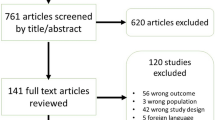Abstract
Background
Skin grafts, frequently used for ear elevation in ear reconstructions, may suffer from color mismatches, scar hypertrophy, secondary contraction, and auricular sulcus depth differences. To determine the most suitable donor area, we compared the contralateral postauricular area, groin, and scalp as potential donor sites.
Methods
Since 2008, we have used three donor sites for obtaining skin grafts used in ear reconstructions. Full-thickness groin skin, split-thickness grafts from the scalp, and contralateral postauricular and groin composite full-thickness skin grafts were used in 202, 231, and 195 patients, respectively. Photographic assessments were used to assess color matching, sulcus depth, cranioauricular angle symmetry, and flatness of the skin grafts; surgical complications were also documented.
Results
Among the three donor sites, there were no significant differences in the color matching scores (p = 0.456). The scalp donor scores had significantly lower mean scores for sulcus depth and symmetry and for graft flatness scores than the other donor sites. The assessment scores between the groin and postauricular donor groups were similar. Each donor site was associated with some surgical complications. However, postauricular skin, when combined with groin skin, demonstrated the best cosmetic results and the fewest complications.
Conclusion
All three donor sites are viable options for skin graft donor sites in ear elevation surgeries. Although the advantages and disadvantages of each site should be explained to the patient, the ultimate donor site selection may be determined according to patient and surgeon preferences.
Level of Evidence IV
This journal requires that authors assign a level of evidence to each article. For a full description of these Evidence-Based Medicine ratings, please refer to the Table of Contents or the online Instructions to Authors www.springer.com/00266.






Similar content being viewed by others
References
Nagata S (1994) Modification of the stages in total reconstruction of the auricle: part IV. Ear elevation for the constructed auricle. Plast Reconstr Surg 9(2):231–242
Firmin F, Marchac A (2011) A novel algorithm for autologous ear reconstruction. Semin Plast Surg 25(04):257–264
Lee KT, Oh KS (2018) Predictors for unfavorable projection of the constructed auricle following ear elevation surgery in microtia reconstruction. Plast Reconstr Surg 141(4):993–10001
Park C, Park JY (2018) Reconstruction of microtias with constricted ear features: a 22-years experience. Plast Reconstr Surg 141(3):713–724
Hata Y, Umeda T (2017) Reconstruction of congenital microtia by using a tissue expander. J Med Dent Sci 47(2):105–116
Xing W, Kang C, Wang Y et al (2018) Reconstruction of microtia using a single expanded postauricular flap without skin grafting: experience of 683 cases. Plast Reconstr Surg 142(1):170–179
Kim YS (2011) A new skin flap method for total auricular reconstruction: extended scalp skin flap in continuity with postauricular skin flap and isolated conchal flap: four skin flaps and temporoparietal fascia flap. Ann Plast Surg 67(4):367
Li C, Jiang H, Huang C et al (2016) A new strategy for total auricular reconstruction using prelamination of extended retroauricular flap with tissue expansion. J Plast Reconstr Aesthet Surg 69(6):819–826
Jiafeng L, Jiaming S, Xiaodan L (2016) Auricular reconstruction using a novel three-flap technique improves the auriculocephalic angle. J Plast Reconstr Aesthet Surg 69(10):1430–1435
Park BY, Im JT, Lim SY et al (2014) Microtia reconstruction using tissue expanders without skin grafts from groin region. J Plast Reconstr Aesthet Surg 67(11):1481–1487
Eavey RD (1999) Microtia repair: Creation of a functional postauricular sulcus. Otolaryngol Head Neck Surg 120(6):789–793
Duvdevani SI, Magritz R, Siegert R (2013) Sulcus construction in microtia repair. JAMA Fac Plast Surg 15(1):17–20
Hendi A, Brodland DG (2006) Split-thickness skin graft in nonhelical ear reconstruction. Dermatol Surg 32(9):1171–1173
Ibrahiem SMS, Farouk A (2016) Total ear reconstruction: The role of bilateral triangular post-auricular flaps for creation of the cephaloauricular sulcus. Alex J Med 53(1):49–53
Brent B (1999) Technical advances in ear reconstruction with autogenous rib cartilage grafts: personal experience with 1200 cases. Plast Reconstr Surg 104(2):319–334
Park C (2000) Subfascial expansion and expanded two-flap method for microtia reconstruction. Plast Reconstr Surg 106(7):1473–1487
Sanniec K, Harirah M, Thornton JF (2019) Ear reconstruction after Mohs cancer excision: lessons learned from 327 consecutive cases. Plast Reconstr Surg 144(3):1
Chen ZC, Goh RCW, Chen KT et al (2009) A new method for the second-stage auricular projection of the Nagata method: ultra-delicate split-thickness skin graft in continuity with full-thickness skin. Plast Reconstr Surg 124(5):1477–1485
Baluch N, Nagata S et al (2014) Auricular reconstruction for microtia: a review of available methods. Plast Surg 22(1):39–43
Qian J, Li Z, Liu T et al (2017) Auricular reconstruction in hemifacial microsomia with an expanded two-flap method. Plast Reconstr Surg 139(5):1200–1209
Brent B (1980) The correction of microtia with autogenous cartilage grafts, I: the classic deformity. Plast Reconstr Surg 66(1):1–12
Han SE, Eom Y, Oh KS (2018) Refinements in elevation of the reconstructed auricle: the “zigzag incision”. J Craniofac Surg 29(3):1
Ou LF, Yan RS, Tang YW (2001) Firm elevation of the auricle in reconstruction of microtia with a retroauricular fascial flap wrapping an autogenous cartilage wedge. Br J Plast Surg 54(7):573–580
Hexsel CL, Loosemore M, Goldberg LH et al (2015) Postauricular skin: an excellent donor site for split-thickness skin grafts for the head, neck, and upper chest. Dermatol Surg 41(1):48–52
Silapunt S, Ray Peterson S, Alam M et al (2005) Clinical appearance of full-thickness skin grafts of the nose. Dermatol Surg 31(2):177–183
Author information
Authors and Affiliations
Corresponding author
Ethics declarations
Conflict of interest
The authors have no conflicts of interest to disclose.
Ethical Approval
The study design was approved by the appropriate ethics review board. The operations were performed by the same doctor, and the study followed the Declaration of Helsinki for ethical.
Informed Consent
All study participants provided informed consent.
Additional information
Publisher's Note
Springer Nature remains neutral with regard to jurisdictional claims in published maps and institutional affiliations.
Rights and permissions
About this article
Cite this article
Li, D., Zhang, R., Zhang, Q. et al. Clinical Results of Ear Elevations in Patients with Microtia Using Skin Grafts from Three Donor Sites: A Retrospective Study. Aesth Plast Surg 44, 1545–1552 (2020). https://doi.org/10.1007/s00266-020-01711-4
Received:
Accepted:
Published:
Issue Date:
DOI: https://doi.org/10.1007/s00266-020-01711-4




